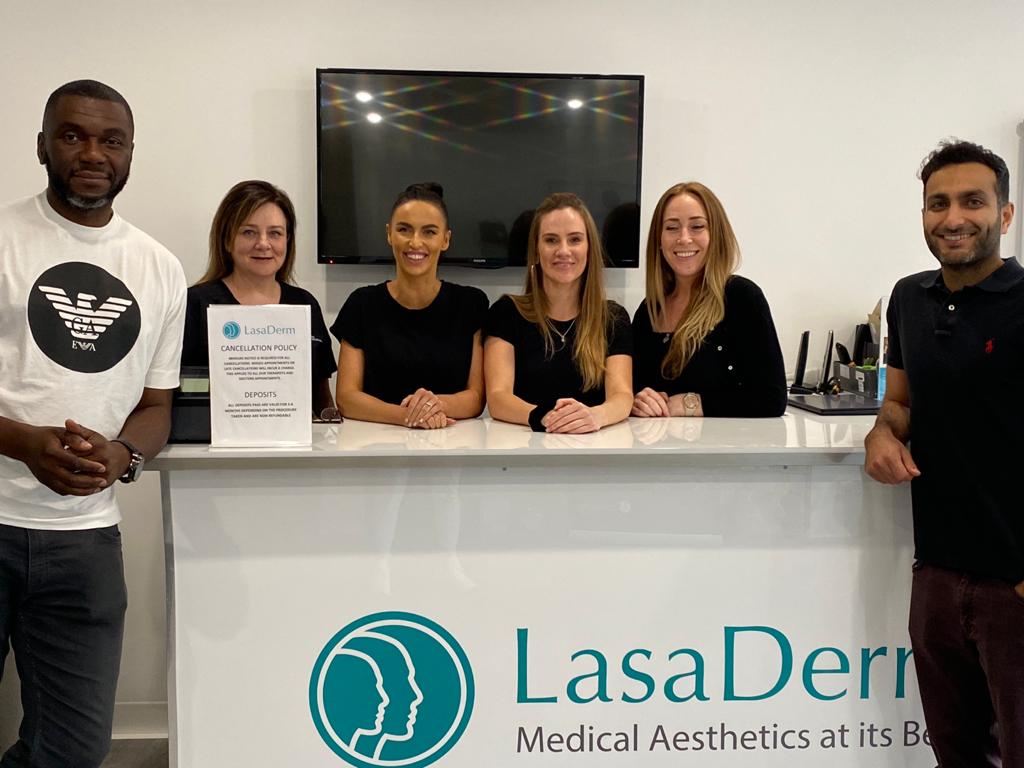The cosmetics industry is one of the fastest growing in the world, as self-care and wellness have become increasingly important to consumers. This incessant growth has allowed for new and innovative products to take centre stage, including chemical peels. With the help of a few viral TikToks, this skin-resurfacing procedure has taken the world by storm, as it helps reduce the appearance of acne, scarring, wrinkles, and sun damage. Its rapid rise to prominence has left many questioning: ‘What is a chemical peel, and how can it benefit me?’ In this article, we’ll answer your questions to help you determine if a chemical peel is right for you.
What Is A Chemical Peel? The Complete Guide
A chemical peel is a cosmetic treatment in which acids are used for intense skin exfoliation. It is intended to remove a uniform amount of damaged skin cells and leave a fresh, supple, and smooth skin layer. There are three types of chemical peel, each offering a deeper level of exfoliation. The right choice depends on the issues you want to address, along with skin type and shade. If you’re looking for a non-invasive way to improve the quality of your skin, keep reading.
- What Is A Skin Peel?
- How Do Chemical Peels Work?
- What Does A Chemical Peel Do?
- How Much Is A Chemical Peel?
- How Long Do Chemical Peels Take?
- Are Chemical Peels Safe?
- Do Chemical Peels Hurt?
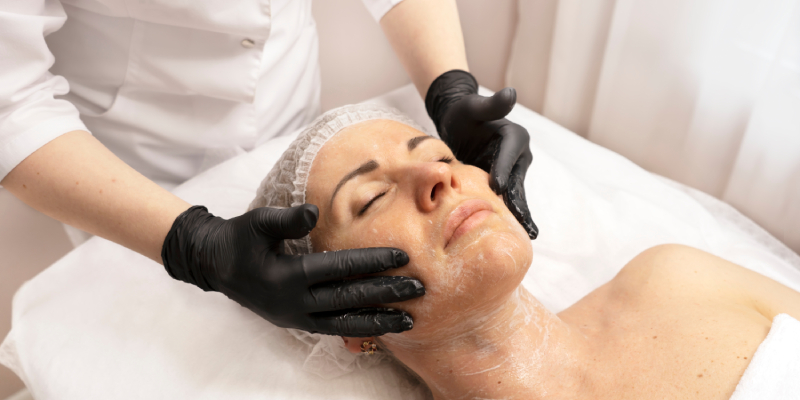
What Is A Skin Peel?
A skin peel is a solution applied to the face to remove dead skin cells and stimulate the growth of new cells. It’s intended to improve the appearance of the skin by reducing age spots and even out the skin tone. A chemical peel can affect the epidermis and the dermis. The epidermis is the visible outer layer of the skin, and the dermis is the layer beneath that contains nerve endings, sweat glands, and hair follicles. All skin peels will remove a controlled amount of skin cells from the epidermis. Stronger peels may also remove cells from the dermis.
As previously mentioned, there are three types of chemical peels. Each solution offers a different level of exfoliation and addresses different issues. For help deciding which peel is best for you, consult with a dermatologist like those at our skin clinic in Milton Keynes. These are the three types of chemical peel and the results you can expect from each:
Light (Superficial) Chemical Peel: This procedure removes the outer layer of skin (epidermis). It is used to treat fine wrinkles, acne, uneven skin tone, and dryness. Light peels can take place every two to five weeks.
Medium Chemical Peel: This peel removes skin cells from the epidermis and portions of the upper dermis. It can treat wrinkles, acne scars, and uneven skin tone. This procedure may need to be repeated to achieve or maintain the desired result.
Deep Chemical Peel: This procedure removes skin cells deeper in the dermis. It is intended to help with deeper wrinkles and even precancerous growths. Repeat procedures are not necessary for the full effect.
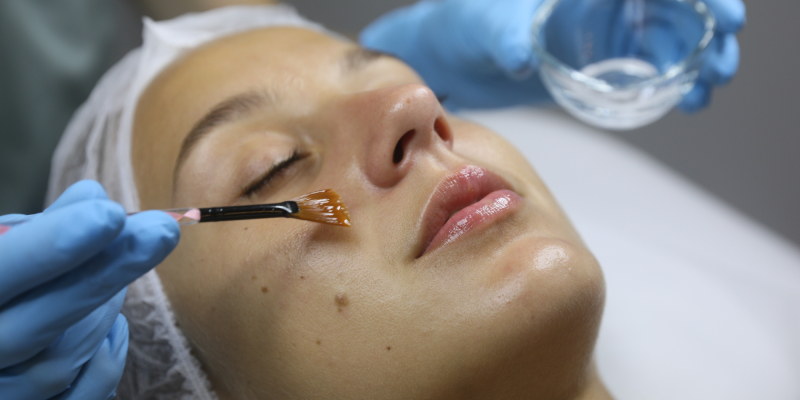
How Do Chemical Peels Work?
Chemical peels raise the skin’s acidity level to around 3.8 pH from its usual level of 5.5 pH. When chemically altered, the cells that bond dead skin to healthy skin loosen. Once loosened, the skin is exfoliated to reveal healthy skin underneath, further promoting the growth of new, healthy skin cells.
Most chemical peels contain one of the two main chemical exfoliants. The first is alpha hydroxy acids, which are naturally occurring substances found in foods like citrus fruits and sour milk. They exfoliate the skin by loosening the surface layers. Alternatively, a chemical peel may use beta hydroxy acid (BHA). Also known as salicylic acid, BHA penetrates the pores to dissolve the accumulated oil, dirt and debris. This makes BHA effective for combatting acne, oily skin, and other irritations.
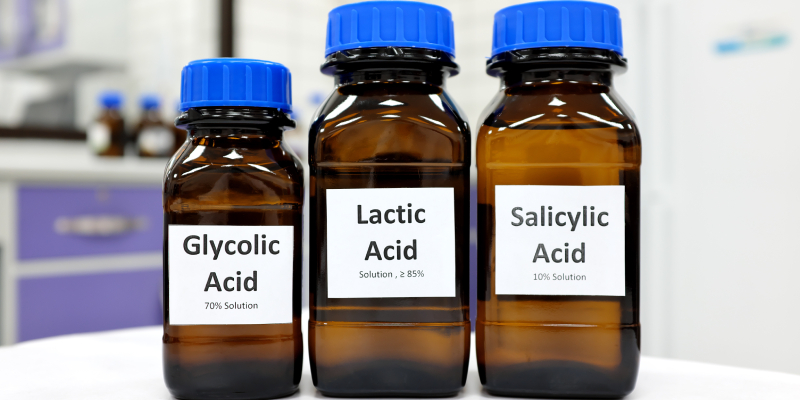
What Does A Chemical Peel Do?
A chemical peel is one of the most effective, non-intrusive methods for those struggling with pigmentation, trauma, acne scars, and sun damage. To begin the procedure, your dermatologist will cover your face in acetone to prepare the skin for the peel. Next, the solution is applied all over the face, with extra layers on the areas where issues are present. At this point, it’s common for the skin to become irritated as it reacts to the change in pH. This process is designed to remove dead skin cells and reveal a level of healthy skin without the issues present before the treatment.
Your face will begin to peel over the next 7-10 days as the dead skin is removed. Once peeled, you can expect to see the following benefits:
- Improved tone and texture
- Brightened skin
- Reduced visibility of sun damage and age spots
- Reduced pore size
- Softened fine lines and wrinkles
- Elimination or reduction of hyperpigmentation and acne scars
- Improved acne and melasma
- Heightened production of collagen resulting in firmer skin
- Slowed ageing process and prevention of wrinkles.
How Much Is A Chemical Peel?
A chemical peel is a relatively inexpensive cosmetic treatment, with an individual peel costing around £350 at our cosmetic clinic in Milton Keynes. When compared to other procedures offering similar results, this rate is extremely competitive.
For the best results, multiple treatment sessions are highly recommended. A series of peels will allow for a deeper level of exfoliation and a reduced chance of your issues returning. Our therapists provide chemical peels from both The Perfect Peel and Image Skincare so our clients can choose a treatment method that suits them. Image Skincare peels start from £100, while an individual peel from Perfect Peel will cost £350 as it provides a deeper exfoliation.
How Long Do Chemical Peels Take?
Again, the length of your treatment depends on the type of chemical peel you choose. While a light chemical peel can be completed in minutes, a deep peel may last around 90 minutes and be portioned into 15-minute intervals to limit your exposure to phenol. You may feel stinging and irritation for around 20 minutes, but this will quickly subside at the end of the treatment.
Once the procedure is complete, your doctor will provide products and guidance to support cleaning, moisturising, and sun protection. It can take up to 14 days for your skin to heal fully; during this time, the dead layer of skin will peel away from your face. It’s essential that you don’t interfere with your skin’s natural peel, as this will delay the time it takes to heal and can leave lasting damage.
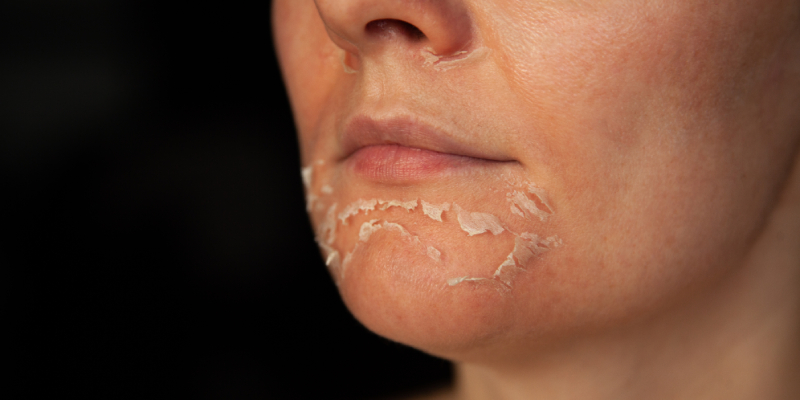
Are Chemical Peels Safe?
When completed by a qualified dermatologist, chemical peels are very safe. Before your peel, a doctor will likely conduct a medical history review and physical exam to ensure you can safely undergo the procedure. If you’ve recently taken oral acne medication, have a family history of keloid scars, are pregnant or have frequent outbreaks of cold sores, your doctor may caution you against a chemical peel.
It’s also important to prepare suitably to ensure the procedure goes as smoothly as possible. This may be through antiviral medication to help prevent infection or by avoiding sun exposure to limit irregular pigmentation. For advice on how to prepare for your chemical peel, be sure to consult with a dermatologist.
- Inflammation: Normal healing from a chemical peel involves redness and swelling of the treated skin. In exceptional cases, this might last for a few months.
- Scarring: In rare cases, a chemical peel can cause scarring. Antibiotics and steroid medications can be used to limit the appearance of these scars.
- Changes in skin colour: Chemical peels can cause hyperpigmentation and hypopigmentation, where the skin becomes lighter or darker than normal. This problem is more common among those with brown or black skin and can be permanent.
- Infection: Skin peels can lead to bacterial, fungal or viral infections.
- Heart, kidney or liver damage: Phenol, the chemical used in many peels, can cause harm to the kidneys and liver. For this reason, chemical peels are portioned in 10 to 20-minute interval.
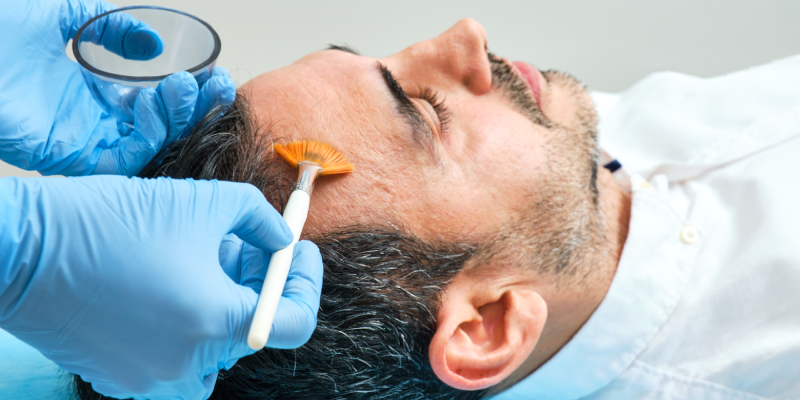
Do Chemical Peels Hurt?
While each patient has different experiences with their chemical peels, it’s rare to experience any serious pain during treatment. Patients may feel a burning or tingling sensation shortly after the acidic solution is applied, but this is manageable and will subside after around 30 minutes. Cold air is often blown in the patient’s face during the procedure to help ease the pain.
Your therapist will provide a step-by-step guide on managing your peeling skin and provide products to help minimise any discomfort. Moisturisers, high-SPF sunscreen, and soothing ointments will all help ensure the days following your procedure are problem-free.

Want To Find Out More?
The reasons behind the rapid rise of chemical peels are evident. While the initial procedure may cause some temporary discomfort, the lasting effects are far more noticeable than those of many other non-intrusive methods of skin correction.
If you’re still interested in moving forward with your own chemical peel procedure, you’re in the right place. Lasaderm’s skin clinic is packed with expert therapists to help guide you through your treatment and private doctors in Milton Keynes to assist with any other health queries you might have. Get in touch to start your skin transformation.
